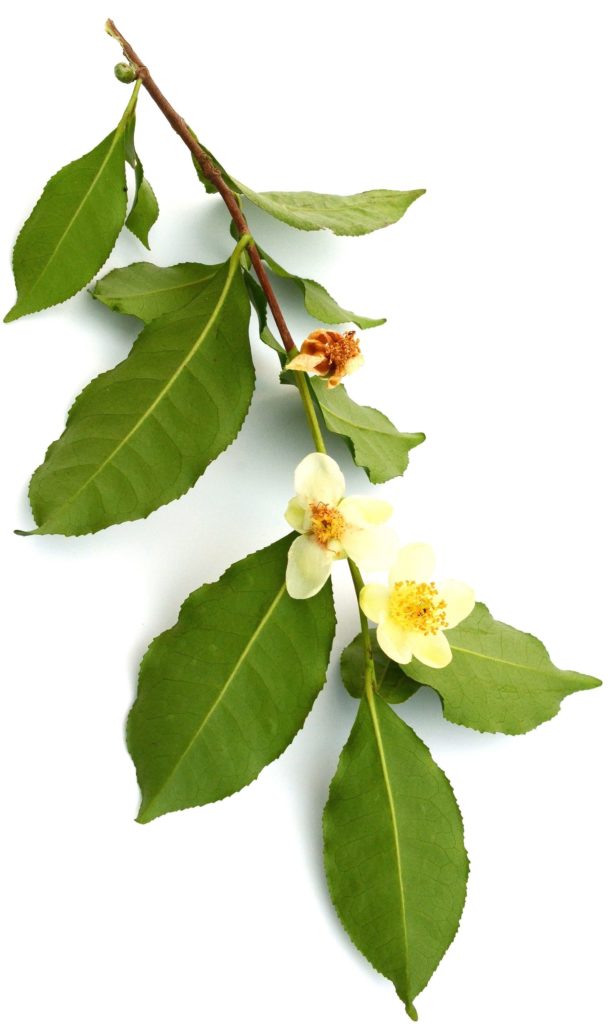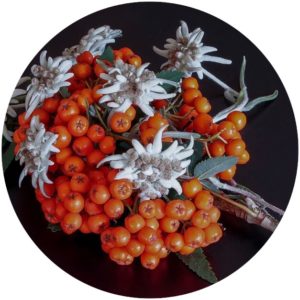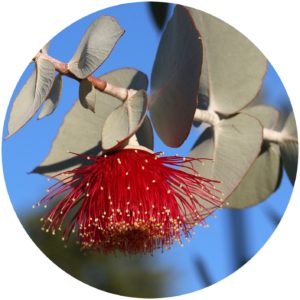Skin & Hair care A-Z beauty glossary definitions. Defining active ingredients with meaningful results. Updated regularly.
A | B | C | D | E | F | G | H | I | J | K | L | M
N | O | P | Q | R | S | T | U | V |W| X | Y | Z
E
- E (Vitamin)
- Vitamin E softens the skin, making scar tissue more pliable and soft. It gives the skin a cushion to deter wrinkles and fine lines. It also supports skeletal and smooth muscles, including facial and throat muscle. In one study, people with hair loss experienced 34.5% more hair growth after taking a 100 mg vitamin E supplement for eight months. It is presumed to fight oxidative stress on the scalp [1]
-
Eczema
- A skin condition characterized by itchy, irritated skin. The raised, inflamed skin can be painful and red and requires care in washing and maintaining adequate barrier function with moisturization.
-
Edelweiss
- Edelweiss is a mountain flower high in antioxidants. It tightens and appears to lift sagging skin; smooths the look of wrinkles
- EGCG
- EGCG is Epigallocatechin gallate, the potent antioxidant from green tea. It protects against environmental damage and neutralizes free radicals that prematurely age skin. It is beneficial to drink and for topical application. Research shows EGCG reactivates dying skin cells. This shows promise for repairing sun damage and for scar healing. [2]
- Eggplant Extract
- Rich in Vitamin C and glucosides, eggplant extract heals sun damage-based hyperpigmentation by evening out age spots as well as helping to assist in different skin problems like Eczema and Psoriasis.
- Elastin, Hydrolyzed Elastin
- Elastin is a protein found in skin and hair. Elastin is paired collagen in the dermis skin layer and gives structural support to skin. It is the stretchy structural proteins that allow the skin to snap back into place. Elastin is vulnerable to sun damage. Elastin is as important as collagen for the appearance of younger skin, but fewer products address the loss of skin elastin. Unlike collagen, topically applied elastin is readily absorbed by the skin and can promote new elastin synthesis. [3] In hair, elastin is easier to replace. Elastin gives hair the ability to stretch and resist breakage. Hydrolyzed Elastin adds strength, body, and elasticity to hair. It improves hair’s tensile strength and moisture retention. This reduces hair breakage.
- Elder Flower
- Elder Flower is rich in bioflavonoids that help prevent wrinkles
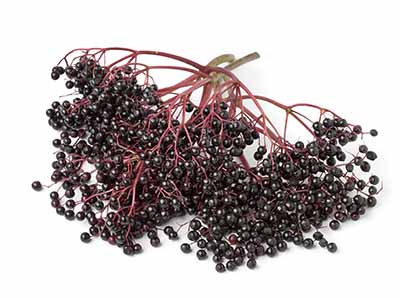
Branch with fresh Elderberries. Elderberry extract provides a gentle Vitamin C
- Elderberry Fruit Extract
- Common name for extract from the Sambucus Nigra. Elderberry Extract increases microcirculation. It is high in Vitamin C and E to decrease fine lines, but is still gentle enough to use delicate skin such as orbital area skin or on the lips.
- Eleven lines
- Eleven lines is a term used to describe the pair of expression lines that appear between the eyebrows, above the nose. They are most noticeable in movement, due to “crunching” the brow while working or even while asleep. Eleven lines are common but respond well to retinol treatments.
-
Elfe Flower
- Elfe Flower is used to thicken thin skin, especially useful around the eyes and mouth to reduce wrinkling.
- Ellagic Acid
- A polyphenol found in many berries and nuts, pomegranates, dark-colored grapes, and red wines. It is a powerful antioxidant within skincare both topically and orally.
- Ellagic acid reduces the destruction of collagen as well as protects against Ultraviolet sun damage. [4] Ellagic acid is also a moisture sealant.
- Emollient
- Ingredients that lubricate the skin surface, smoothing or softening its’ appearance. They tend to be heavier than creams and moisturizers.
- Emulsifier
- An emulsifier binds together skin care ingredients. There are both synthetic chemical and natural emulsifiers.
- Epidermis
- Epidermis is the thin, outer protective layer of the skin. The epidermis is made up of five sub-layers: the stratum germinativum, stratum spinosum, stratum lucidum, stratum granulosum, and stratum corneum.
- Essence
- A concentrated formulation with a water or serum consistency which is splashed or dabbed onto skin after cleansing. The purpose is to hydrate and prepare the skin for the next layer of skincare applied afterwards, typically a treating active or moisturizer. A product commonly seen in multi-step skin care routines. A good essence contains no occlusives which would block absorption.
- Essential Oil
- Essential Oil is concentrated liquid compounds or extracts of plants. It is generally aromatic. A few drops are diluted into a carrier oil. There are various health and beauty benefits to Essential Oils. Lavender is used for hair conditioning, Rosemary Oil promotes scalp health. Tea Tree is used for acne.
- Euphorbia Cerifera Wax
- A vegan substitute for beeswax but with similar properties. It works well with other waxes for improved product consistency and to raise melting points without chemicals.
- Eucalyptus Essential Oil
- From the Eucalyptus plant. Eucalyptus Oil is an invigorating scent. It is a common addition to a facial steam treatment as Eucalyptus Oil moistures the skin and locks in moisture. In skincare it is an anti-inflammatory, antibacterial, antiviral antioxidant that can be used in bath and face washes. It also has clarifying and antiseptic properties to heal wounds from acne, psoriasis, or eczema. The macrocarpal in Eucalyptus increases ceramides. [5] It helps congestion due to allergies, colds, or respiratory issues. Best used on oilier skins and in moderation on dry or sensitive skins. Highly potent, always dilute.
- Eugenia Caryophyllus
- Eugenia caryophyllus is clove leaf oil.
Clove leaf oil can firm the skin.
It is also an anti-inflammatory that reduces acne-causing bacteria.
- Evening Primrose Oil
-
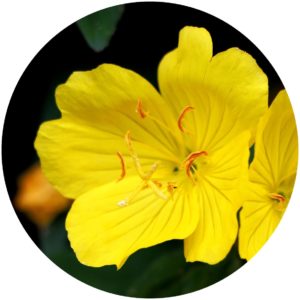
Evening Primrose
Evening Primrose Oil is a vitamin supplement and topical ingredient that restores a glow to the skin. It is excellent as a topical ingredient to provide moisture without clogging the skin and is helpful for eczema and acne. Supports elastin, moisture, and skin firmness. [6] Full of Omega-6 fatty acids, it keeps hair and skin healthy. As an oral supplement, it supports skin health and acne reduction, but some experience a period of acne breakouts before skin stability is achieved.
- Exfoliate, Exfoliation
- To remove the dead skin cells from the top layer of the skin. Exfoliation smooths the appearance of the skin and is helpful in reducing acne formation as it removes dead skin cells that can harbor bacteria in clogged pores. Chemical peels, grain scrubs, and dermabrasion devices are all means of exfoliation.
References
- Beoy LA, Woei WJ, Hay YK. Effects of tocotrienol supplementation on hair growth in human volunteers. Trop Life Sci Res. 2010 Dec;21(2):91-9. PMID: 24575202; PMCID: PMC3819075.
- Journal of Pharmacol Exp Ther 2003 306: 29-34
- Ganceviciene, Ruta et al. “Skin anti-aging strategies. Dermato-endocrinology” vol. 4,3 (2012): 308-19.
- Bae JY, Choi JS, Kang SW, Lee YJ, Park J, Kang YH. Dietary compound ellagic acid alleviates skin wrinkle and inflammation induced by UV-B irradiation. Exp Dermatol. 2010;19(8):e182-e190. doi:10.1111/j.1600-0625.2009.01044.x
- Ishikawa J, Shimotoyodome Y, Chen S, Ohkubo K, Takagi Y, Fujimura T, Kitahara T, Takema Y. “Eucalyptus increases ceramide levels in keratinocytes and improves stratum corneum function”. J Cosmet Sci. 2012 Feb;34(1):17-22. doi: 10.1111/j.1468-2494.2011.00675.x. Epub 2011 Jun 23.
- Muggli, R. (2005), Systemic evening primrose oil improves the biophysical skin parameters of healthy adults. International Journal of Cosmetic Science, 27: 243-249. doi:10.1111/j.1467-2494.2005.00274.x
